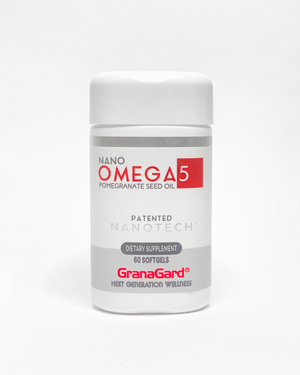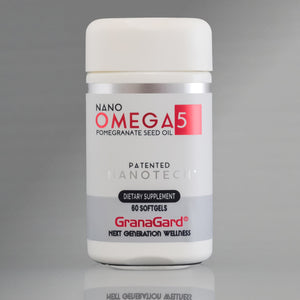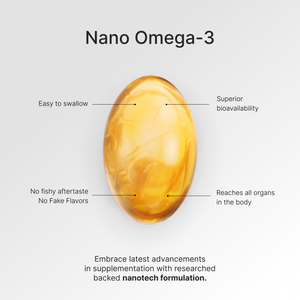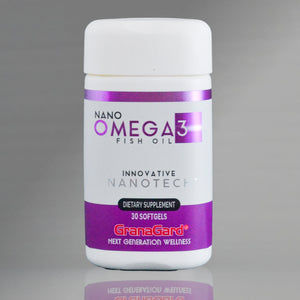Antioxidants are elements, substances, compounds, and enzymes that the body uses to neutralize free radicals and other highly reactive agents, which produce the oxidation of biomolecules such as lipids, proteins, and even DNA. If it weren't for antioxidants, oxidation would cause significant damage, accelerating aging and predisposing us to a large number of diseases.
To understand what antioxidants are and how they work, let's take a quick look at the following concepts.
Atoms and their equilibrium state

Atoms are the smallest part of any substance; for example, if we take a piece of iron and keep dividing it into smaller and smaller parts, there will come a point when if we continue dividing it, it would cease to be iron, and we would have reached an iron atom. Each atom is composed of a nucleus containing positively charged protons and neutrons that have no charge. Around the nucleus and in motion are negatively charged electrons.
The number of protons and neutrons in the nucleus, as well as the number of electrons, gives each element its unique characteristics; for example, a carbon atom contains 6 protons, 6 neutrons, and 6 electrons, while a hydrogen atom contains one proton and one electron. For stability, atoms must maintain a balance between their positive and negative charges. Negatively charged electrons move around positively charged protons. Electrons are located in different layers or orbitals. Orbitals are the different levels where electrons are grouped and are identified by letters s, p, d, f, each with a specific electron capacity. In the "s" orbital, only 2 electrons are housed, in the "p" orbital 6, in the "d" orbital 10, and in the "f" orbital 14. In each of these orbits, electrons are in pairs, and you always move to a higher orbital when the previous one is complete.
Molecules
Molecules are the association of two or more atoms of the same or different elements.

Atoms of many elements do not have their outermost orbit complete with electrons, so to gain stability, they tend to take or share electrons from other atoms. When they share them and gain stability, a molecule is formed. Water is a stable molecule in which oxygen, lacking two electrons in its outer orbit, gains them by sharing electrons provided by two hydrogens (one electron each). The famous formula we know for water H2O tells us that the molecule has two hydrogen atoms and one oxygen atom.
What are free radicals
Free radicals are defined as any atom or molecule that contains one or more unpaired electrons in its outermost orbital and can exist as an independent atom or molecule.

Free radicals are highly reactive molecules formed daily in our bodies as a result of cellular metabolism, such as in respiration, digestion, and muscle contraction, among others. In addition to free radicals, other highly reactive substances are produced that can also cause oxidation in our cells, known as ROS, reactive oxygen species. Health problems arise when our bodies must endure an excess of free radicals (oxidative stress) because our internal defense mechanisms diminish with age, and radicals from environmental pollutants, stress, chronic diseases, and many other sources are added.
What an antioxidant is and how it works
An antioxidant is a molecule capable of inhibiting the formation or production of ROS and/or promoting their removal or elimination, in addition to neutralizing free radicals. Antioxidants can be endogenous, produced by our own body, or exogenous, from external sources such as diet and antioxidant supplements. Among antioxidants, there are different mechanisms of action, so we can categorize them as follows:Removal of ROS
These act on existing free radicals and ROS, doing so through various pathways:-
- Direct trapping of ROS
- Induction of enzymes that remove ROS
- Induction of enzymes that synthesize endogenous antioxidants.
Reduction of ROS formation
These have a mechanism of action that influences the production of new radicals and ROS to be lower. They work in two ways:
- Inhibition of ROS-forming enzymes
- Inhibition of metal-dependent ROS formation
Among all of them, the most well-known mechanism is the direct trapping of ROS, referring to the ability of many antioxidants to act as "stabilizers or quenchers of various reactive species" (“free radical scavengers”).

The mode of action through which neutralization occurs is by the antioxidant donating an electron to the free radical or ROS. This mechanism is also known as “SET” (single electron transfer), causing the free radical or ROS to lose its condition of having a lack of electrons in its outer orbitals. Although the antioxidant now lacks an electron, meaning it has oxidized, its reactivity is null and incapable of affecting its environment. One of the mechanisms considered very efficient is the induction of enzymes that remove ROS: It is based on the ability of certain compounds (indeed not all antioxidants) to induce the synthesis of antioxidant enzymes.
Among them, the following stand out: superoxide dismutase, catalase, glutathione peroxidase, among others. The antioxidant action of these enzymes results in a reduction of cellular oxidation state.
The best antioxidants
The best antioxidants have more than one mechanism of action, for example, Omega 5 (Punicic Acid) acts by direct trapping of ROS, with a great capacity provided by the three double bonds in its molecule, but there are also studies suggesting the formation of enzymes that remove ROS and reduce their generation. Considering all the damage that unbalanced oxidation (oxidative stress) can cause in our bodies, from accelerated aging to chronic degenerative diseases, we must ensure good antioxidant protection; if we are fortunate, with a daily diet rich in antioxidants, if we cannot have good control of the diet, then with a good antioxidant supplement such as Nano Omega 5 from GranaGard®, made with Nanotechnology. It’s time to protect yourself!





